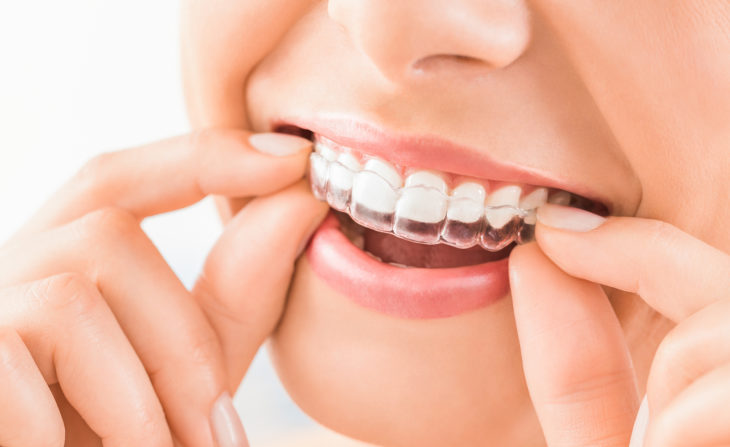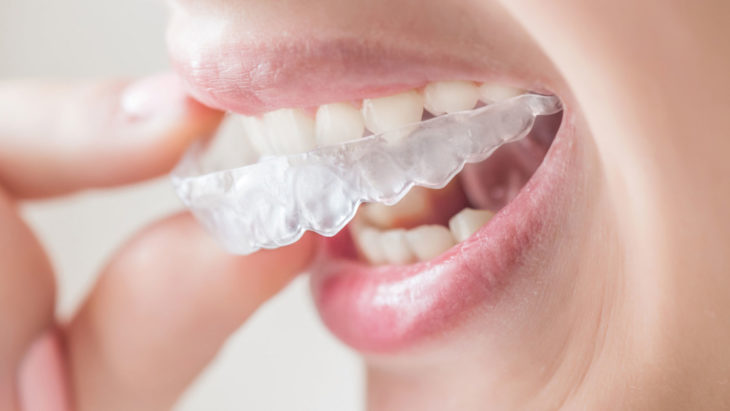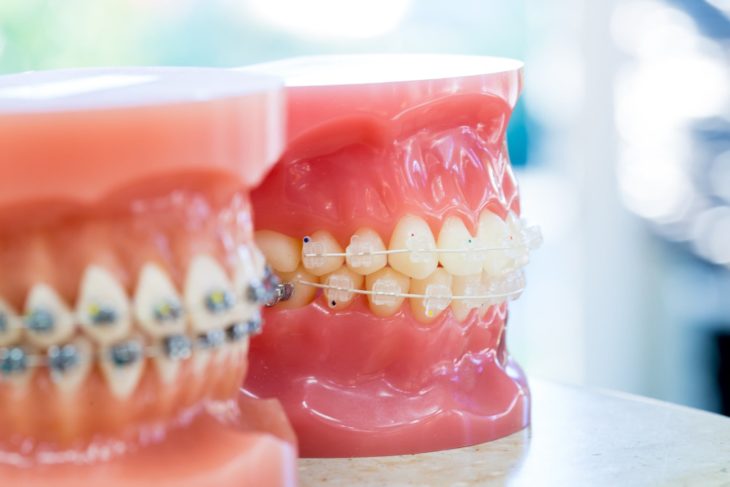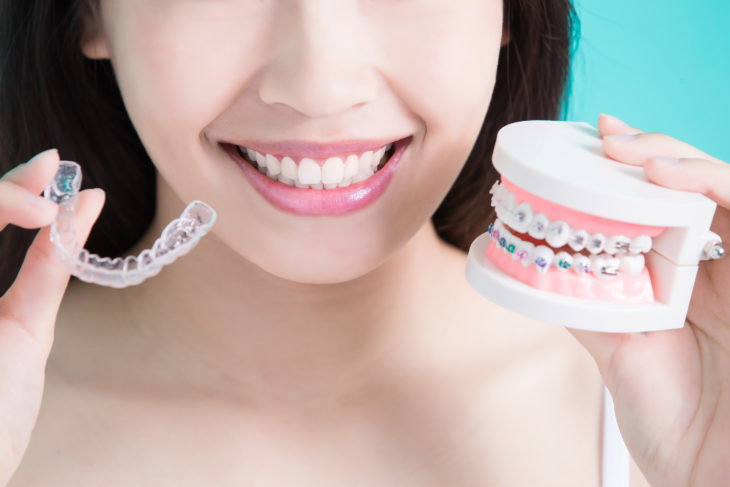If you feel that clear aligners are suddenly everywhere, you definitely aren’t alone. Over the past couple of years, they’ve become an increasingly popular option for people looking to improve their smiles.
There’s a good reason too! Clear aligners have many advantages over traditional tooth-straightening methods, like metal braces, that make them the perfect option for most people.
Contents
How Do Clear Aligners Work
As opposed to metal braces, which are unsightly, painful, and complicated, clear aligners are made out of nearly invisible aligners that are designed to shift your teeth over time slightly.
Every two weeks you switch to a new set of aligners until your teeth are completely straight. You can still eat, drink, and brush your teeth like you normally would. As long as you wear your aligners for at least 22 hours a day, they’ll get the job done.
But not all clear aligners are created equal, and the different options can be confusing.

Source: caterhamdentalcare.co.uk
Traditional Aligner Treatment
Traditionally, the only way to get clear aligners was to get Invisalign through your local orthodontist, where you would get stuck paying a massive markup – often, treatment would cost around $6k – $7k. In exchange, you would get the benefit of your orthodontist’s knowledge, experience, and high-quality, modern equipment.
Orthodontists also require an average of 10-15 office visits over the course of your treatment that can interrupt your busy schedule and make the process a bit of a hassle. However, the direct doctor-patient relationship gives doctors the chance to conduct in-person procedures, like IPR (a procedure where dentists shave off a couple of millimeters of the tooth to allow more space for movement), that are necessary to get the best results in close to 80% of cases.

Source: colgateoralhealthnetwork.com
Direct To Consumer Aligner Treatment
On the other hand, modern direct-to-consumer tooth straightening companies like Smile Direct Club and Candid Co. send customers at-home impression kits that you use to take your own molds of your teeth. They use your molds to create aligners that they send directly to your house, without requiring you ever to visit a real dentist or orthodontist.
But it’s not as easy as it seems. If your impressions aren’t perfect, the aligners won’t fit right, and your teeth won’t move the way they’re supposed to. You can generally expect to have to make multiple impressions until you get it right.

Source: appelortho.com
Direct To Consumer Dental Risks
Direct-to-consumer aligner companies also have some real dental downsides. While it helps them keep prices low, cutting out dentists and orthodontists means that their patients miss out on the experience and knowledge that real doctors provide.
The reality of DTC aligner companies is that doctors never see you in person, don’t take x-rays, and only spend a few minutes reviewing each case remotely. This leads to subpar results and disappointment when consumers’ expectations are not met. In some cases, direct-to-consumer companies can actually leave teeth worse than they were before!
It’s important to remember that clear aligners are not the same thing as a monthly subscription box or contacts that you ship straight to your door. It’s an actual medical treatment that orthodontists literally spend years in school studying.

Source: lacretedentist.com
The Hybrid Solution
A third option exists that blends traditional doctor visits and DTC convenience. Startups like Dandy, OrthoFX, and SmileLove are working with dentists to provide customers the best of both worlds; affordable prices (ie. under $3000) and the expertise and guidance of real dentists and orthodontists.
Just like Invisalign’s providers, partner dentists for these newer startups are fully equipped to take panoramic X-rays, high-tech 3D scans, and hi-res photos. This allows for more exact treatment plans and better results. These dentists are also able to identify and resolve any periodontal issues that might impede treatment or produce suboptimal results.
Because consumers visit a dentist upfront, they have the opportunity to undergo procedures that will improve treatment outcomes (such as IPR, fillings, and even root canals).
With all the different clear aligner options available, it’s important to consider the pros and cons of each model and pick the one that works best for you. Direct-to-consumer companies can be a good, low-cost solution for mild cases. For more severe cases, traditional braces are usually a better fit.
Be sure to carefully review the proposed treatment plans and choose a company that delivers the results you’re looking for. With so many options available, there’s no reason you should have to settle!
